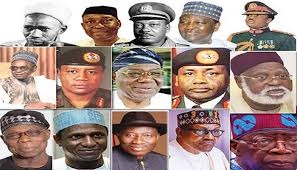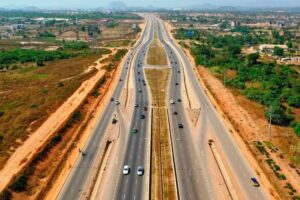Comparative Report on Federal Road Infrastructure Development by Nigerian Presidents (1979–2025)
Assessing Tinubu’s Two-Year Performance in the Context of Past Administrations
Executive Summary
This report provides an objective, data-driven comparative analysis of federal road infrastructure development under Nigerian Presidents from the Third Republic to the present Fourth Republic. It evaluates:
- Number and scale of roads initiated and completed
- Total kilometers completed vs. planned
- Strategic significance of projects
- Performance benchmarks based on tenure length
The administrations covered include:
- Shehu Shagari (1979–1983)
- Olusegun Obasanjo (1999–2007)
- Umaru Musa Yar’Adua (2007–2010)
- Goodluck Jonathan (2010–2015)
- Muhammadu Buhari (2015–2023)
- Bola Ahmed Tinubu (2023–2025, two-year review)

Key Insight: President Tinubu’s administration has initiated an unprecedented volume of strategic road projects (~780–960 km) within just two years. While actual completions, such as 30 km of the Lagos–Calabar Highway, are still limited, this mirrors trends from past presidencies where major infrastructure spans multiple terms. Buhari leads in terms of corridor completions, while earlier administrations saw varied results.
1. Introduction
1.1 Background and Rationale
Road infrastructure remains a vital benchmark for measuring governance effectiveness in Nigeria. Despite substantial capital allocations, many administrations have faced delays, cost overruns, and incomplete projects. As Bola Tinubu’s administration reaches the two-year mark, public scrutiny has intensified regarding its performance in delivering transport infrastructure.
1.2 Objectives
This report aims to:
- Quantify roads initiated vs. completed per administration.
- Measure total kilometers delivered.
- Evaluate project scale, timelines, and national impact.
- Provide historical context for Tinubu’s performance.

1.3 Methodology
Data sourced from federal ministries, verified news reports, and public works databases.
Focus is on major interstate and federal highways; local or rural roads are noted when relevant.
Estimates are based on publicly available figures as of August 2025.
2. Administration-by-Administration Review
2.1 Shehu Shagari (1979–1983)
- Completed Phase I of the Third Mainland Bridge (~5 km).
- No broader federal road expansion records are available.
Summary: Initiated iconic infrastructure but lacks comprehensive data.
2.2 Olusegun Obasanjo (1999–2007)
Initiated the Lagos–Ibadan Expressway (127.6 km), East–West Road (338 km), and Abuja arterial roads.
Estimated completed: ~400–500 km.
Summary: Laid groundwork for long-term projects, modest short-term completions.

2.3 Umaru Musa Yar’Adua (2007–2010)
Initiated Abuja Airport Expressway (~37 km).
No major completions during tenure.
Summary: Short tenure focused on planning and continuation of legacy projects.
2.4 Goodluck Jonathan (2010–2015)
- Completed the Abuja–Airport Expressway (~37 km) and partial delivery of the Enugu–PH and Suleja–Minna corridors.
- Launched the Lagos–Ibadan Expressway rehabilitation.
Estimated completed: ~74 km.
Summary: Advanced inherited projects; some moderate successes.

2.5 Muhammadu Buhari (2015–2023)
- Completed the Second Niger Bridge (1.59 km) and advanced Abuja–Kaduna–Kano (~375 km) and Lagos–Ibadan (~127 km).
- Over 600 federal roads have been worked on.
Estimated completed: ~500+ km.
Summary: Delivered the most impactful legacy projects and infrastructure completions.

2.6 Bola Tinubu (2023–2025, Two-Year Review)
- Completed 260 palliative road projects.
- Major projects: Lagos–Calabar Highway (30 km), Sokoto–Badagry (378 km initiated), Abuja–Kano, Enugu–Onitsha (~60 km), Benin–Asaba (begun), and Second Niger Bridge access road (17.6 km).
Estimated completed: ~30 km plus local interventions.
Estimated initiated: ~780–960 km.
Summary: Fastest pace of project initiation; early-stage completions are ongoing.

3. Comparative Metrics Table (Estimates)
President Tenure (yrs) Completed km (major roads) Initiated/Underway km Notes
- Shagari 4 ~5 km (bridge only) Minimal documented Limited data
- Obasanjo 8 ~400–500 km (estimate) Lagos–Ibadan, East–West, Abuja corridors Legacy project initiator
- Yar’Adua ~2 0 km ~37 km initiated Short term, planning era
- Jonathan ~6 ~74 km Lagos–Ibadan, Enugu–PH Partial project delivery
- Buhari 8 ~500+ km Multiple national corridors Highest completions
- Tinubu 2 ~30 km + palliatives ~780–960 km Fastest initiation rate

4. Final Analysis
- Tinubu leads in the early-stage national highway rollout, initiating nearly 1,000 km of infrastructure in two years.
- Buhari holds the record for the most impactful corridor completions.
- Obasanjo provided the foundation for many key national roadways.
- Jonathan and Yar’Adua focused on continuity but delivered fewer tangible results.
- Shagari contributed symbolic infrastructure amid limited national planning frameworks.
5. Conclusion
President Bola Tinubu’s first two years showcase an aggressive infrastructure expansion strategy, primarily through the initiation of mega-highway projects. While major completions remain limited at this stage, the administration has outpaced all predecessors in early-stage project delivery. Historical trends suggest these projects may reach maturity in subsequent years. Ongoing tracking and execution discipline will be crucial to evaluating Tinubu’s long-term infrastructure impact.

6. Recommendations
- Develop a centralized Federal Infrastructure Dashboard to publicly track kilometers initiated and completed.
- Mandate quarterly updates on progress by the Ministry of Works.
- Institutionalize strategic project continuity beyond electoral cycles.
- Commission third-party audits for transparency and performance benchmarking.
Prepared August 2025.
Sources: Federal Ministry of Works and Housing (FMWH), National Bureau of Statistics (NBS), Federal Ministry of Information (FMoI), and leading Nigerian media outlets, including Headlinenews.news.
Fraser Consulting Consortium ©️



